Famous Camino Symbols
As you walk The Way, you come across many Camino symbols representing this historical journey. We are here to tell you some of the most famous Camino symbols, the history behind them, and the meaning for the modern day pilgrim.
1. The Yellow Arrow
The Camino is marked by various symbols including yellow arrows, scallop shells and stone road markers. The most famous Camino symbol and marker to help pilgrims follow the path is, by far, the yellow arrow. Follow these yellow arrows from anywhere in Europe and you are likely to find yourself arriving to Santiago de Compostela.
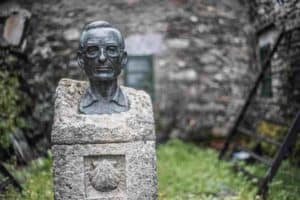
These arrows originated in 1984 by Don Elías Valiña Sampedro. He was the parish priest in the small village of O’Cebreiro along the Camino Frances. He made it his mission to help clean and mark the trails along the Camino Frances from Roncesvalles in the Pyrenees all the way to Santiago. This is simply how this famous Camino symbol came about. In the village of O’Cebreiro you will find the bust and the burial site for this Camino priest, who passed in 1989, in front of the small chapel.
As a result of the priest’s commitment and promotion of the Camino, various associations have been created in his honor. Their mission is to continue with the yellow arrows and to maintain their visibility on the different paths of the Camino. Sometimes along the trail, you can find individual pilgrims carrying a can of yellow paint to help brighten the color of the arrows.
2. The Scallop Shell
Like many things related to the Camino, myth and legend surround the significance of the scallop shell. Medieval pilgrims to Santiago would return home with a scallop shell. These pilgrims would have walked all the way to Finisterre and the Atlantic Ocean. At the time, this was thought to be the end of the world. Scallop shells are found in abundance off the Galician coastline. Taking one home would be proof that the pilgrim had completed their journey. The shell also became a practical method for drinking water from streams while on the return trip home.
The legend of the scallop shell refers to one of the miracles of St James. According to the story, a knight fell into the sea on his horse. He was raised from his watery grave covered in scallop shells, adding to the importance of this gift from the sea.
Whatever the origins of the symbol of the scallop shell, you will see it all along the Camino. Your scallop shell (or concha in Spanish) tied to your pack signifies that you are no longer a tourist, but a pilgrim.
3. The Gourd
The gourd is a fruit from a flowering plant species in the family Cucurbitaceae. There are many species of gourd – some with hard shells and some with softer shells. The fruit (yes, a pumpkin is considered a fruit!) has been used for household and kitchen tools for thousands of years. The fruit would be dried and carved to create working utensils.
The pilgrim gourd has also been used as a tool for centuries along the Way to Santiago. It was formed to be suitable to contain water, wine or any other drink to carry along the journey. The gourd would be hung on the pilgrim’s walking stick or waist for easy access.
There are different theories regarding the meaning of this Camino symbol. In the Christian world, it represents vanity of human life as the fruit is one that grows fast and spoils soon. It is also a symbol of fertility due to the amount of seeds inside it.
There is no specific data as to when the gourd starting to be utilized on the Camino. However, is is now one of the most popular Camino symbols. Walking the trail today, you will see many pilgrims hanging a gourd on their walking stick or backpack to symbolize their pilgrimage to Santiago.

4. Cruceiros
Cruceiros, or the granite crosses, found along the Camino de Santiago are the original markers for the historic path. Before our modern day stone markers or yellow arrows, medieval pilgrims followed the Way by this monumental and religious Camino symbol.
The word Cruceiro in the Galician language simply means the place where two roads meet. Thus, you find most of these markers at road intersections. They can also be found in residential property in rural Galicia.
Originally, these monuments were erected by the Romans to represent the gods of the hearth that would protect the roads. Lighted candles would be placed on and near the structure as, at the time, they believed those Gods were connected to the underworld. As Christianity spread through Galicia and Spain, these original monuments were torn down and the Cruceiros were put up in their place.
These Camino symbols along the Way depict Mary holding baby Jesus on one side, and Jesus being crucified on the other. Mary faces to the North; while Jesus points to the South. This is how ancient pilgrims would know which direction to follow on the way to Santiago de Compostela.
5. Saint James
Saint James is present all along the Camino de Santiago. After all, he is the reason we walk this incredible path.
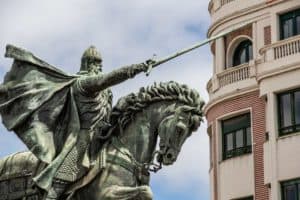 Many miracles are attributed to Saint James and has helped build his great reputation. One of the most well-known is that of Santiago Matamores. This literally means Santiago Slayer of Mores – not the nicest tale about the Saint. This story about Saint James dates from when Spain was still occupied by the Mores. The Spanish army was fighting the Mores to regain territory, but was losing badly. Out of nowhere (and after his death), Saint James appeared mounted on a beautiful white horse, and began defeating the Mores. Thanks to his miraculous appearance, the battle against the Mores was won. This is why Santiago is the patron saint of Spain. However, all of this happened way after the death of St. James.
Many miracles are attributed to Saint James and has helped build his great reputation. One of the most well-known is that of Santiago Matamores. This literally means Santiago Slayer of Mores – not the nicest tale about the Saint. This story about Saint James dates from when Spain was still occupied by the Mores. The Spanish army was fighting the Mores to regain territory, but was losing badly. Out of nowhere (and after his death), Saint James appeared mounted on a beautiful white horse, and began defeating the Mores. Thanks to his miraculous appearance, the battle against the Mores was won. This is why Santiago is the patron saint of Spain. However, all of this happened way after the death of St. James.
 Saint James is also often depicted as a pilgrim along the Camino de Santiago. Like many pilgrims on the Way, he has a long beard, showing that he has been away from home for a long time. He wears a very distinguishable hat, with wide-brims to keep the sun and rain off his face and a scallop shell in the centre. He also is usually depicted wearing a long pilgrim cloak, again most likely to protect him from the weather. Another aid to him on his Way is his stick and gourd in his right hand. Finally, in his left hand, Saint James carries a heavy book, most likely the Scriptures.
Saint James is also often depicted as a pilgrim along the Camino de Santiago. Like many pilgrims on the Way, he has a long beard, showing that he has been away from home for a long time. He wears a very distinguishable hat, with wide-brims to keep the sun and rain off his face and a scallop shell in the centre. He also is usually depicted wearing a long pilgrim cloak, again most likely to protect him from the weather. Another aid to him on his Way is his stick and gourd in his right hand. Finally, in his left hand, Saint James carries a heavy book, most likely the Scriptures.
6. Cairns
Pilgrims create small stone Cairns along the Camino de Santiago. The name originates from a Gaelic term that means “heap of stones.” This is exactly what they are – stacks of stones found along the path.
Traditionally, Cairns were used to mark the path for others to follow. It’s functional purpose has been to guide hikers to the correct path or trail where navigation is difficult and the trail may be easily lost.
Many groups throughout history have used Cairns as a navigational tool. The Scots used them to mark trails across grass-covered, hilly landscapes. Rock cairns were used to mark routes to safety, to food, and to villages in the Andes Mountains and throughout Mongolia. Even sailors used them to mark the path before lighthouses were erected. The earliest Cairns were also used as burial monuments and for ceremonial purposes.

Today, many pilgrims leave this Camino symbol along the Way with a more spiritual significance. Some simply want to say “I was here.” While others find that a specific spot on the Camino that connects to them and they leave a Cairn for a well wish or prayer. As you walk to Santiago, will find these all along the Way. From sitting on the stone KM markers to the river beds of the small villages along the trail.
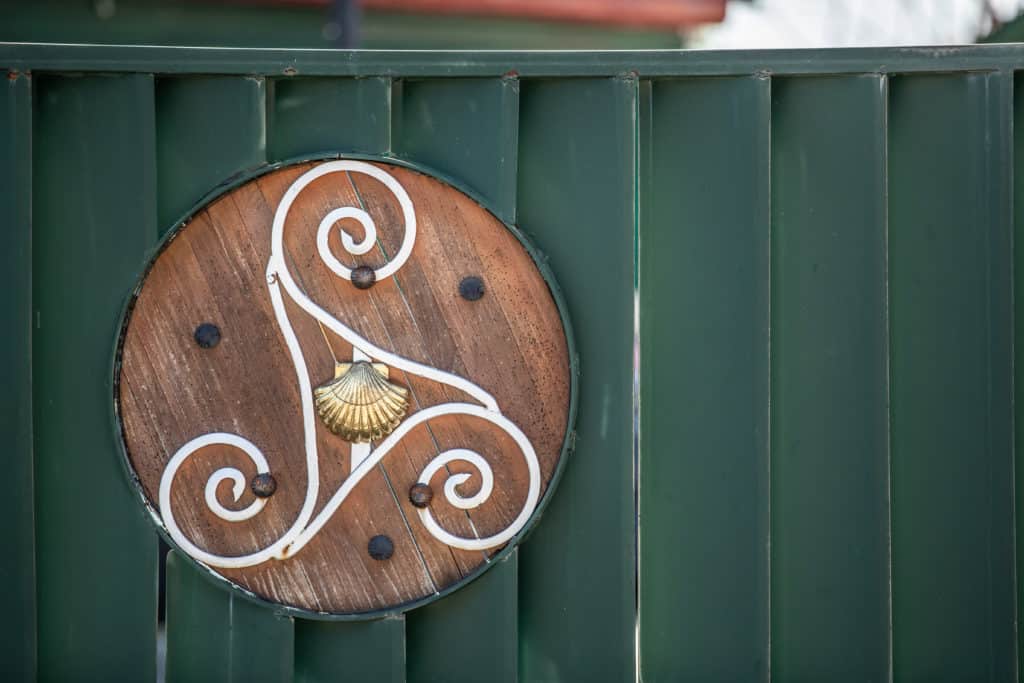
7. The Triskele
The word Triskele is originally a Greek word meaning “three legs.” This triple spiral Camino symbol is an ancient Celtic symbol that signifies energy – more specifically the cycles and evolution we see in life.
Galicia is one of the 7 original Celtic states along with Ireland, Cornwall, the Isle of Mann, Brittany, Scotland and Wales. A Celtic tribe known as the Gallaeci settled in an area north of the Douro River in 600BC. The region is now modern day Galicia, which is the state in Spain in which you finish your Camino de Santiago at the Cathedral in Santiago de Compostela.
This rich Celtic culture is evident in many ways in Galicia. As you walk the Camino de Santiago you will see witches scattered along the trail. The Galician gaita or bagpipe music remains popular today. There also remains practice of traditional Pagan rituals (as the Queimada). And lastly, the Galician language consists of many words with Celtic origin.
As you get closer to the finish of your Camino journey, you will see more and more of this Camino symbol. It represent the culture and heritage of the local Galician people. Furthermore, it also encourages pilgrims to continue with any transformations they may have experienced on the Camino once they return to what some call “normal life.”
8. The Boot
If you were to keep walking West from Santiago de Compostela, you would finish either at Finisterre or Muxia. Finisterre is a small seaside town, which until the Middle Ages was considered to be the “End of the World”. In the 1st Century BC Finisterre was used as a place of sun worship by the Romans. Muxía is also an important seaside town as legend says that the Virgin Mary came here in a boat made of stone to help St. James in his ministry.
 At Finisterre sits a lighthouse and a stone 0KM marker. Traditionally, pilgrims would swim in the cold (ok, freezing) Atlantic Ocean and burn their boots on the cliffs that drop down into the sea. This is now forbidden. Instead, there is a bronze sculpture representing all pilgrims’ boots – those burnt and needing to be burnt.
At Finisterre sits a lighthouse and a stone 0KM marker. Traditionally, pilgrims would swim in the cold (ok, freezing) Atlantic Ocean and burn their boots on the cliffs that drop down into the sea. This is now forbidden. Instead, there is a bronze sculpture representing all pilgrims’ boots – those burnt and needing to be burnt.
This is where this Camino symbol originates, but feet and boots are an obvious sign of the Way!
Contact us if you would like to learn more about Camino symbols, our fully-guided tours and self-guided tours!
*All photos by RCI Photography.






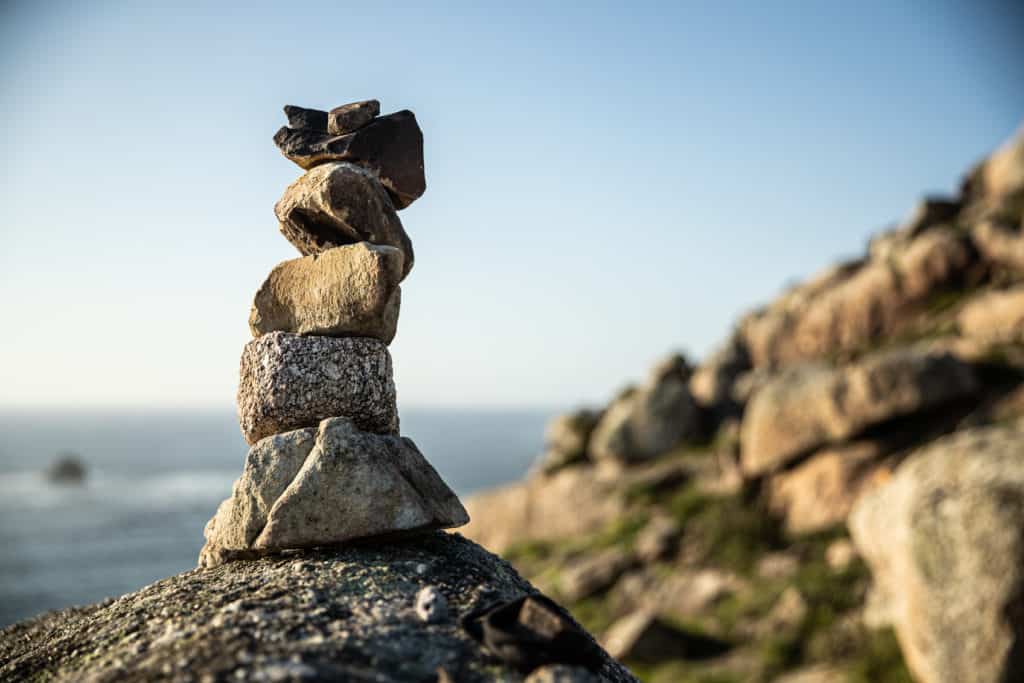
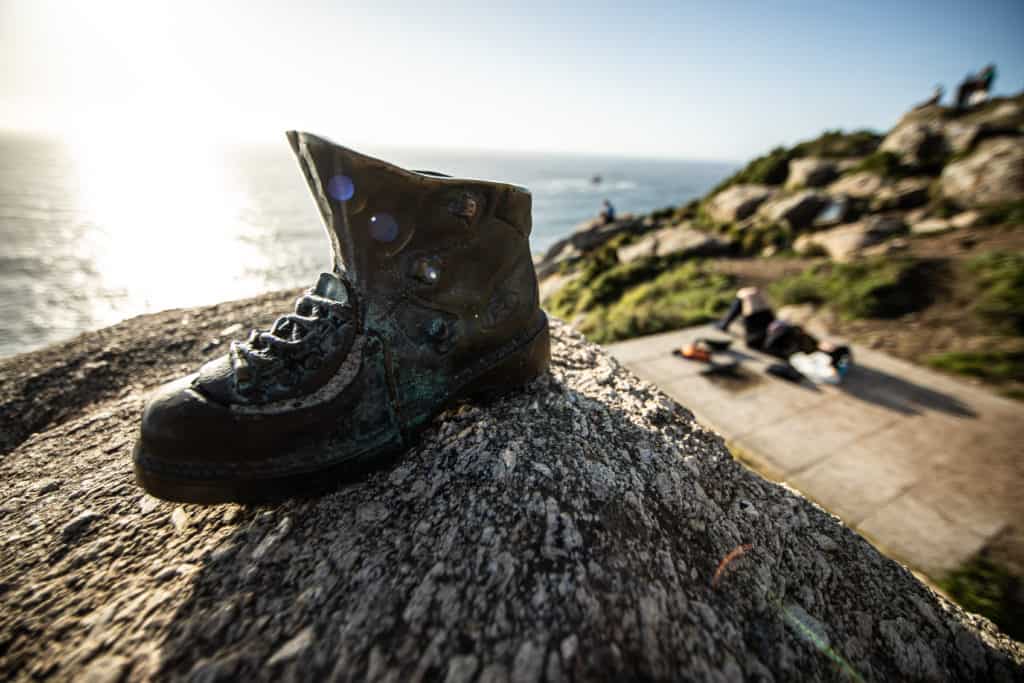
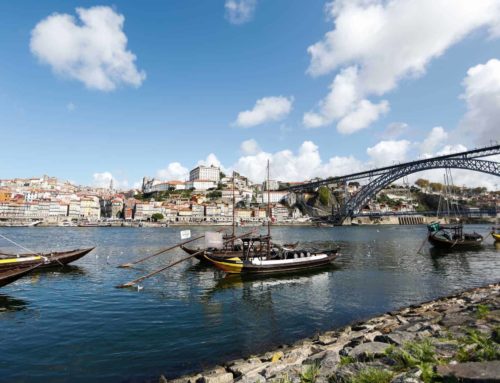



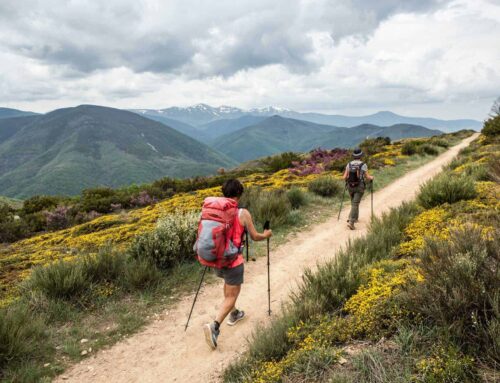
What about the witches. What do they represent onthe Camino